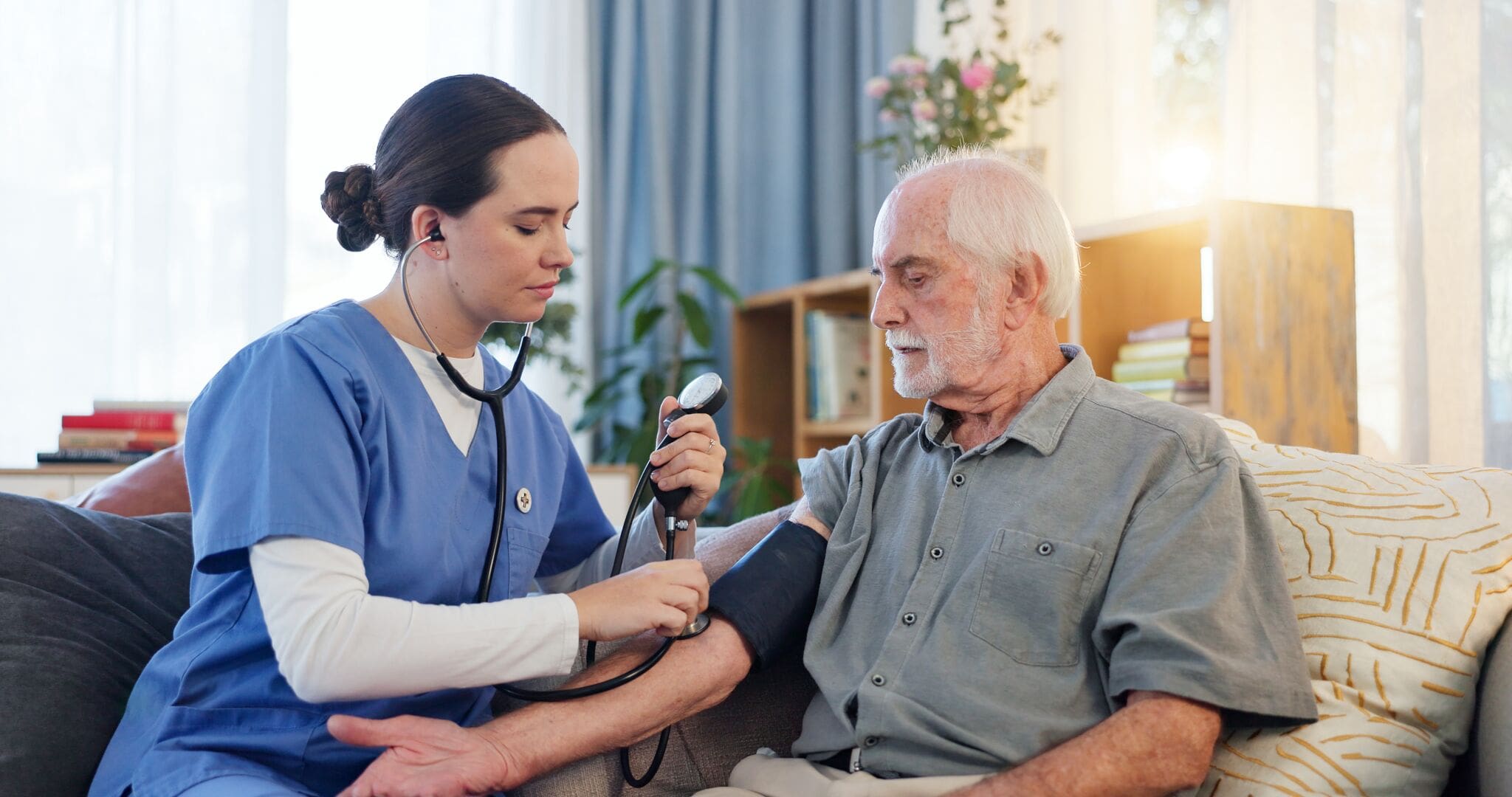In this article
Hand-Arm Vibration Syndrome (HAVS) is relatively common in industries where workers use vibrating tools regularly, such as construction, manufacturing, mining, and forestry. In the UK, it’s a well-recognised occupational disease, and thousands of workers are diagnosed each year.
Exact prevalence figures vary, but estimates suggest that up to 300,000 workers in the UK are at risk of developing HAVS. The Health and Safety Executive (HSE) continues to report new cases annually, particularly in sectors with poor vibration control measures. While regulatory efforts have reduced numbers compared to past decades, HAVS is still a significant concern in workplaces where exposure limits are not strictly managed.
HAVS explained
Hand-Arm Vibration Syndrome (HAVS) is a condition caused by prolonged and repeated exposure to vibration, primarily from hand-held power tools or vibrating machinery. It affects the nerves, blood vessels, muscles, and joints of the hand and arm. HAVS is a serious occupational disease that is preventable but not reversible once developed.
Employers have a legal responsibility to manage vibration exposure under the following regulations:
- Control of Vibration at Work Regulations 2005 (UK)
- Health and Safety at Work Act 1974
- EU Physical Agents (Vibration) Directive
HAVS symptoms
The symptoms of HAVS can affect the blood vessels, nerves, and muscles of the hands and arms, leading to various health issues. The condition can progress over time, and early recognition of symptoms is essential to prevent further damage. Symptoms are typically divided into three stages:
Early Symptoms (Initial Phase)
At the early stage, the symptoms can be intermittent and may include:
- Numbness – the fingers or hands may feel numb or tingly, particularly after using vibrating tools. This sensation may be temporary but can become persistent with continued exposure.
- Reduced grip strength – the ability to grip objects may weaken, making it harder to hold tools or perform fine tasks.
- Pins and Needles (Paraesthesia) – a tingling or prickling feeling in the fingers is common, often occurring after using vibrating machinery.
- Cold sensitivity – hands and fingers may feel unusually cold, even in warmer environments. This is often exacerbated by exposure to cold temperatures, and the symptoms may occur more frequently during winter months.
Progressive Symptoms (Mid-Stage)
As the condition progresses, the symptoms can become more frequent and severe:
- White Finger (Vibration White Finger or VWF) – this is one of the most characteristic symptoms of HAVS, this occurs when the blood vessels in the fingers constrict, causing them to turn white. The fingers may appear pale or waxy and feel cold to the touch. This can lead to a feeling of numbness, pain, and difficulty with dexterity. The whiteness is typically most prominent at the tips of the fingers.
- Pain in fingers and hands – there may be discomfort or aching in the hands and fingers, particularly after exposure to vibration. The pain may become chronic and persistent.
- Loss of sensitivity – over time, HAVS can lead to reduced sensation in the fingers and hands. This can impair fine motor skills and reduce the ability to detect temperature or pressure changes.
- Sweating or clamminess – in some cases, excessive sweating or clamminess in the hands can occur, which may be a response to reduced blood flow or nerve damage.

Severe Symptoms (Advanced Stage)
If left untreated or if exposure to vibration continues, HAVS can lead to long-term damage with more severe and permanent symptoms:
- Permanent White Finger – the fingers may remain pale or discoloured, even when not exposed to vibration or cold. This is a sign of permanent damage to the blood vessels and poor circulation.
- Muscle weakness – prolonged nerve damage can result in weakness in the muscles of the hand and forearm, affecting the ability to perform tasks that require strength or dexterity.
- Permanent numbness – the sensation in the fingers may become permanently impaired, making it difficult to feel objects or even differentiate between different textures.
- Reduced dexterity – the ability to perform precise or coordinated movements with the hands can decline, making simple tasks like fastening buttons or using small tools difficult.
- Raynaud’s Phenomenon – this is when the blood vessels in the fingers constrict excessively in response to cold or stress, leading to the fingers turning white or blue. This is a more severe version of the cold sensitivity mentioned earlier and can result in permanent damage to the circulatory system in the hands.
- Permanent circulatory damage – the blood vessels in the fingers may be permanently constricted, leading to chronic pain, coldness, and further damage to the skin and nerves.
Additional symptoms include:
- Reduced quality of life – the progression of HAVS can result in significant impairment of daily life activities, such as difficulty holding and using tools, performing manual tasks, or even handling everyday objects.
- Emotional and psychological effects – persistent symptoms and the impact on daily activities may lead to emotional distress, frustration, anxiety, or depression, particularly as the individual realises the condition’s long-term nature.
What can cause HAVS?
Hand-arm vibration Syndrome (HAVS) is caused by regular and frequent exposure to hand-arm vibration, typically from using vibrating tools and machinery. It damages blood vessels, nerves, and joints in the hands and arms. Over time, this can result in reduced blood flow, tingling, numbness, and, in severe cases, the inability to use the hands properly.
Factors that can cause HAVS include:
- Prolonged exposure to vibrating tools – continuous or repetitive use of hand-held power tools is the main cause.
- High vibration levels – the intensity of the vibration from the tool is a key factor. The higher the vibration levels, the quicker the potential for damage.
- Duration of use – prolonged exposure, especially without adequate breaks, can increase the risk of HAVS.
- Incorrect use or poor maintenance of tools – tools that are not properly maintained or used in a way that increases vibration exposure can heighten the risk.
- Cold environments – exposure to cold temperatures can restrict blood flow and make the hands more susceptible to vibration-related damage.
- Repetitive use – frequent use of vibrating tools, even for shorter periods, can still accumulate damage over time.
- Individual factors – people with certain medical conditions or poor circulation may be more vulnerable to HAVS.
Typical tools that can cause HAVS
Typical tools that can cause HAVS include:
- Pneumatic tools such as drills, hammers, and wrenches.
- Power tools, including angle grinders, sanders, and jigsaws.
- Chainsaws, particularly those used in forestry or construction work.
- Impact wrenches and screwdrivers are often used in mechanical work or construction.
- Vibrating hand tools, such as floor polishers, concrete breakers, and demolition tools.
- Electric drills and hammer drills.
Who is at risk of HAVS?
People at risk of HAVS include those who work in industries involving heavy machinery or tools, including:
- Construction workers
- Builders
- Forestry workers
- Engineers
- Agricultural workers
- Mechanics
- Painters, especially those using vibrating spray guns or sanders.
- People who use vibrating power tools regularly, such as drills, grinders, saws, and other hand-held machinery produce vibrations that can pose a risk.
- People who work with hand-held equipment for extended periods as long exposure to vibration from tools like chainsaws, pneumatic drills, or even jackhammers increase the risk of HAVS.
- People who have inadequate protective measures. Workers who don’t use PPE such as vibration-reducing gloves or who don’t follow safe working practices are more vulnerable.
To reduce the risk, it’s important for workers to take regular breaks, use vibration-reducing equipment, and follow safety guidelines in their workplaces.

HAVS regulations and safety
HAVS is regulated under:
- Control of Vibration at Work Regulations 2005 – this legislation sets legal duties for employers to assess, manage, and reduce risks associated with hand-arm vibration.
- Health and Safety at Work etc. Act 1974 – requires employers to ensure the health, safety, and welfare of employees.
- Management of Health and Safety at Work Regulations 1999 – imposes a duty on employers to carry out risk assessments and take preventive measures.
Risk assessments must be completed thoroughly in order to identify tools and machinery that may cause vibration exposure, estimate vibration magnitude and exposure duration and consider individual susceptibility and previous exposure.
Control measures include using low-vibration tools, maintaining equipment properly, introducing anti-vibration handles, implementing job rotation, limiting exposure time, and providing rest breaks. Although using PPE like gloves may provide warmth, they do not significantly reduce vibration exposure.
There should be health surveillance including regular checks for early symptoms of HAVS, occupational health assessments for workers exposed above the EAV and monitoring and recording symptoms to prevent worsening conditions.
There should be training and awareness raising, educating workers on risks and safe working practices encouraging early reporting of symptoms providing guidance on correct tool handling and maintenance. Employers must ensure compliance with these regulations to protect workers from long-term health issues associated with HAVS.
Can HAVS be prevented?
HAVS can be prevented with proper control measures and workplace practices. Prevention focuses on reducing exposure to hand-arm vibration (HAV) from tools and machinery. Prevention methods include:
- Risk assessment & monitoring – conduct regular vibration risk assessments in the workplace, identify tools and equipment with high vibration levels and use a HAV monitoring system to track exposure over time.
- Tool & equipment management – choose low-vibration tools where possible, maintain and service tools regularly to keep them in good condition and use anti-vibration handles, gloves, or damping materials to reduce impact.
- Work practices & training – train workers on safe handling techniques to minimise grip force, encourage job rotation to reduce prolonged exposure and implement regular breaks to allow hands and arms to recover.
- Personal protective measures – provide anti-vibration gloves, though they should not be the primary control measure, ensure workers wear warm gloves and keep hands warm, as cold increases the risk of HAVS.
- Compliance with legal limits – adhere to the Control of Vibration at Work Regulations 2005, which set limits on daily vibration exposure, use the Exposure Action Value (EAV) and Exposure Limit Value (ELV) to manage risk.
By implementing these measures, HAVS can be effectively prevented, protecting workers from long-term damage.
Cures for HAVS
There is no cure for HAVS. Once nerve and blood vessel damage has occurred, it is permanent. However, if caught early, the progression can be stopped or slowed by reducing or eliminating exposure to vibration.
HAVS results in the progressive destruction of nerve endings in the hands and fingers. Once nerves are damaged to a certain extent, they do not regenerate effectively, leading to permanent numbness, tingling, and loss of dexterity.
Prolonged exposure to vibration leads to the narrowing and thickening of blood vessels. Over time, this reduces blood flow, causing Raynaud-like symptoms (white fingers and cold sensitivity). Once these blood vessels are damaged, they do not return to their normal function.
Chronic vibration exposure leads to muscle weakening and soft tissue damage, which cannot be reversed. This results in reduced grip strength and fine motor control.
HAVS does not suddenly develop, it worsens over the years. By the time symptoms appear, the damage is already done, making reversal impossible. Current medical science has no effective way to regenerate peripheral nerves or fully restore damaged blood vessels. Research is ongoing, but no cure exists yet.
While there’s no cure, symptoms can be managed by:
- Stopping further vibration exposure.
- Keeping hands warm and improving circulation.
- Using medication to manage blood flow, for example, calcium channel blockers.
- Physiotherapy to maintain hand function.
Early detection is key, the sooner vibration exposure stops, the better the outcome.
If you think you have symptoms of HAVS, you should take the following steps:
- Report it to your employer – if you use vibrating tools at work, inform your employer. Under UK health and safety law, they have a duty to protect you from HAVS and should provide health surveillance.
- See Your GP or Occupational Health – A doctor can assess your symptoms and may refer you for further tests. Early diagnosis can prevent worsening symptoms and long-term damage.
- Make adjustments – use anti-vibration gloves (though they don’t fully prevent HAVS). Keep hands warm and dry to improve circulation, reduce grip force and let the tool do the work and rotate tasks to limit prolonged vibration exposure.
- Check your legal rights – if HAVS is work-related, you may be entitled to compensation. The Control of Vibration at Work Regulations 2005 requires employers to assess and control vibration risks.

If you have been diagnosed with HAVS due to exposure to vibration at work, you may be entitled to compensation. This could come from one or more of the following sources:
- Industrial Injuries Disablement Benefit (IIDB) – if you developed HAVS due to your work, you may be eligible for IIDB, a government benefit for certain industrial diseases. The amount depends on the severity of your condition and is assessed by a medical examiner. You can apply through the Department for Work and Pensions (DWP).
- Employer’s Liability Claim (Personal Injury) – if your employer failed to protect you from excessive vibration exposure, you may be able to claim compensation through a personal injury claim. You would need to prove negligence, such as a lack of protective equipment or failure to monitor vibration exposure. Claims generally need to be made within three years of diagnosis.
- Compensation through a Union – if you are a union member, your union may help you pursue a claim against your employer.
- No-Win, No-Fee Solicitors – many solicitors specialise in workplace injury claims and offer a no-win, no-fee service.






